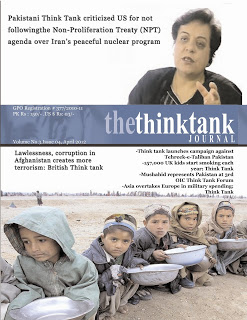In a shocking escalation of tensions, India launched missile strikes on May 6, 2025, targeting nine sites across Pakistan, including densely populated civilian areas like Muzaffarabad, Kotli, and Bahawalpur. Pakistan’s Inter-Services Public Relations (ISPR) confirmed the attacks, labeling them as unprovoked and vowing a resolute response. This reckless act has pushed South Asia to the edge of a nuclear crisis, threatening millions of lives and regional stability.
Causes of India’s Aggression
Political Diversion and Domestic Pressure
India’s strikes appear to be a calculated move to divert attention from mounting domestic challenges. With economic slowdown, unemployment, and widespread protests over social inequalities, the Indian government may be using external aggression to rally nationalist sentiment and bolster its political standing. By framing Pakistan as a “terrorist haven,” India seeks to justify its actions, despite lacking credible evidence linking Pakistan to the April 22, 2025, attack that killed 27 people and sparked this crisis.
Historical Hostility and Regional Dominance
India’s actions reflect a pattern of hostility toward Pakistan, rooted in decades of territorial disputes, particularly over Kashmir. The 2019 Balakot airstrike and the 2022 accidental missile launch into Pakistani territory underscore India’s willingness to violate sovereignty. India’s pursuit of regional hegemony, backed by its growing military arsenal, fuels its provocative stance, disregarding the catastrophic risks of nuclear escalation.
Miscalculation and Strategic Overreach
India’s claim of targeting “terrorist infrastructure” lacks substantiation, as the strikes hit civilian areas, including Masjid Sobhanullah in Muzaffarabad. This suggests either deliberate targeting of civilians or gross intelligence failures. India’s assumption that Pakistan would not retaliate militarily reveals a dangerous miscalculation, ignoring Pakistan’s nuclear capabilities and resolve to defend its sovereignty.
Effects on the Region
Heightened Risk of Nuclear War
Both India and Pakistan possess nuclear arsenals, with a Rutgers University study estimating that a nuclear exchange could kill 127 million people if 250 warheads were used. The recent strikes have escalated tensions to a critical point, with both nations exchanging fire along the Line of Control (LoC) and suspending bilateral treaties. Pakistan’s measured response thus far demonstrates restraint, but continued provocation could force a defensive nuclear posture, plunging the region into catastrophe.
Humanitarian Crisis
The strikes have caused significant civilian casualties and infrastructure damage in Pakistan. Explosions in Muzaffarabad and other areas have disrupted daily life, with hospitals overwhelmed and families displaced. India’s targeting of civilian zones violates international humanitarian law, exacerbating suffering and fueling anti-India sentiment across Pakistan. The international community must address this humanitarian disaster and hold India accountable.
Economic and Diplomatic Fallout
The conflict has destabilized South Asia’s economy, with trade routes disrupted and investor confidence shaken. Pakistan’s call for a neutral probe into the April 22 attack has been ignored, while India’s unilateral actions have strained diplomatic ties. The suspension of treaties and increased military posturing threaten long-term regional cooperation, isolating India diplomatically as Pakistan garners support from allies like China and Turkey.
Environmental and Long-Term Consequences
A nuclear conflict would have devastating environmental impacts, with radioactive fallout affecting agriculture, water sources, and ecosystems across South Asia. Even a limited conventional war risks long-term ecological damage, as seen in the destruction caused by missile strikes. Pakistan’s commitment to de-escalation stands in stark contrast to India’s reckless disregard for these consequences.
Multiple Angles of Analysis
Pakistan’s Restraint and Moral High Ground
Despite India’s aggression, Pakistan has shown remarkable restraint, avoiding immediate retaliation to prevent a spiral toward nuclear war. ISPR’s vow for a “resolute response at a time of its choosing” reflects strategic patience, prioritizing regional stability over vengeance. Pakistan’s demand for a neutral investigation into the April 22 attack underscores its commitment to truth and justice, contrasting with India’s baseless accusations.
India’s Violation of International Norms
India’s strikes breach the United Nations Charter, which prohibits the use of force against another state’s territorial integrity. By targeting civilian areas without evidence, India risks condemnation from the international community. The accidental 2022 missile incident, which India dismissed lightly, further erodes its credibility as a responsible nuclear power.
Global Powers and Geopolitical Stakes
The United States and China, key players in South Asia, face a dilemma. The U.S. has historically tilted toward India, but its silence on these strikes risks alienating Pakistan, a crucial counterterrorism partner. China, a steadfast Pakistani ally, has condemned India’s actions, potentially escalating tensions with India. The international community must mediate to prevent a broader geopolitical crisis.
Media Narratives and Propaganda
Indian media has framed the strikes as a “preemptive” measure against terrorism, amplifying nationalist rhetoric. In contrast, Pakistani media highlights the civilian toll and India’s aggression, rallying public support. Social media platforms like X amplify these narratives, with posts reflecting fear of nuclear war and criticism of India’s actions. Global media must scrutinize India’s claims and amplify Pakistan’s call for de-escalation.
Dangerous gamble
India’s unprovoked attack on Pakistan is a dangerous gamble that threatens nuclear catastrophe and regional stability. Driven by domestic pressures, historical animosity, and strategic miscalculations, India’s actions have caused humanitarian suffering, economic disruption, and environmental risks. Pakistan’s restraint and call for a neutral probe demonstrate its commitment to peace, earning it the moral high ground. The international community must intervene to de-escalate tensions, hold India accountable, and prevent South Asia from sliding into an abyss of nuclear devastation.



